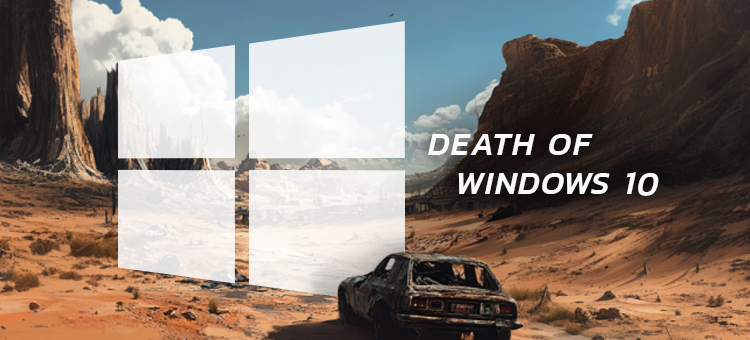Microsoft announced that Windows 10 will reach its end of life on October 14, 2025, marking a major transition as the company shifts its focus to Windows 11 and beyond. This development ends a nearly decade-long chapter that began with Windows 10’s launch in 2015, promising regular updates and security patches. As this support ends, users will no longer receive these critical updates, which could have serious implications for data security, software compatibility and overall operational stability.
What are the Security Concerns with Post-Windows 10?
Unlike previous end-of-life cycles, Windows 10’s global reach means this change affects millions, from home users to enterprises, making it one of the most impactful transitions in Microsoft’s history. One of the biggest challenges for organizations and individuals still using Windows 10 will be cybersecurity.
Without regular patches, systems become highly vulnerable to malware, ransomware and other evolving cyber threats. Hackers are known to exploit outdated software, which could be catastrophic for industries handling sensitive data, like healthcare and finance. It’s crucial for businesses to understand these risks and start implementing robust cybersecurity measures to maintain compliance with regulations and protect their data.
Related reading: Is It Possible to Protect My Business from Fake Software Updates and Malware Threats Anymore?
Expect Software Compatibility Issues After Windows 10’s End of Life
Another significant impact of Windows 10’s end of life will be software compatibility. After 2025, new software will prioritize Windows 11 and its successors. Older applications may become obsolete, making productivity a challenge for organizations that delay upgrading to Windows 11. This can lead to higher IT maintenance costs as outdated systems require frequent troubleshooting. To prevent these disruptions, organizations should consider proactive upgrades and consultations with your local Kansas City IT support specialists.
What You Need to Know About Upgrading to Windows 11
Microsoft has simplified the upgrade process to Windows 11, but not all devices running Windows 10 will meet the new system’s hardware requirements, such as TPM 2.0 and Secure Boot. Users with incompatible systems must decide whether to invest in new equipment or accept the risks that come with unsupported software. Businesses should perform a thorough assessment of their hardware to determine if it can run Windows 11. If hardware updates or replacements are necessary, consider integrating modern IT solutions to optimize workflows and improve performance. In other words, you might as well make the most of your IT.
More on that…
Planning Your Migration Strategy
For a seamless transition from Windows 10 to 11, it’s essential to develop a comprehensive migration plan. This includes evaluating hardware inventory, assessing software compatibility and setting timelines to minimize disruptions to your operations.
Businesses should also consider this as an opportunity to update their IT infrastructure, improve efficiency and enhance security. Our IT consulting team can help create a roadmap tailored to your organization’s needs, ensuring you remain productive and secure.
Related reading: IT Networking Benefits and Support Solutions
Take Advantage of the Opportunity to Modernize
Windows 10’s end of life isn’t just a change; it’s an opportunity to future-proof your organization. By upgrading to Windows 11 and exploring managed IT services, you can enhance efficiency and security. Learn more about our managed IT services and how we can support your transition.
Microsoft’s shift to Windows 11 is a reminder of the ever-evolving technology landscape. Being proactive can save you from future challenges and position your organization for long-term success. Need help or expert guidance? Contact us to start planning today.




